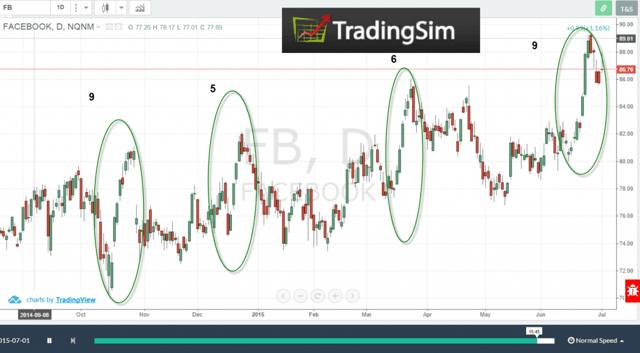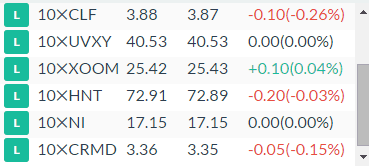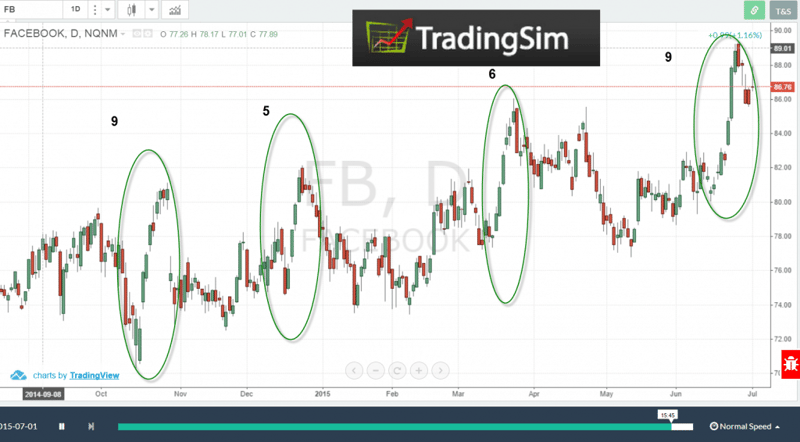For those fans of the Tradingsim blog, you know that we focus heavily on day trading. However, I want to take some time to start discussing swing trading, as some of our readers are unable to day trade due to the fact they are working during the day and other life constraints.
To this point, I want to delve into the topic of what it takes to swing trade for a living, as this could be another avenue for our readers to pursue making money in the markets.
Swing trading is a different animal than day trading, as you are unable to track if you have won or loss on a given day.
In this article, I will be covering the 5 things required in order to successfully swing trade for a living, which will help overcome the challenges of not being able to closely track and monitor your trading performance.
#1 – Money

Available Funds
Let’s start by discussing the obvious thing required for successful swing trading – money. Unlike day trading where you can leverage up to 4 times your cash, swing trading will require you to hold positions overnight, so you won’t be able to take the plunge. At best, you could hold twice the size of your cash account by using margin. However, I wouldn’t recommend taking on that level of risk as you are trading for a living.
Single and No Kids
To walk through the required funds needed to swing trade for a living, we are going to first assume our fictional trader is single with no kids.
I love my kids, but the real complexity of life kicks in once you are responsible for another human being. You have to start thinking of things like clothing, food, extracurricular activities and college savings. Without even trying, the costs just begin to add up on you.
When you are single without kids, you don’t have any of these worries. Your only concern is to take care of yourself, so you will have more wiggle room with the living standards your living standards.
For this scenario, let’s assume you have $3,500 dollars in total living expenses per month. Over a course of a year, this adds up to $42,000. Since we are taxed so heavily here in the States, this would equate to a gross trading salary of approximately $55,000 a year just to break even.
Now that we have our number, let’s back into the minimum amount of cash we would need in our trading account to survive.
If we have a starting account of $100,000 dollars and assuming we were only going to use cash, we would need to make an average of 4.2% per month. This sounds pretty reasonable on the surface, but a few things pop in my mind.
First, its pretty difficult to make a consistent 4.2% per month with all of the external market factors out of your control, which are always present when trading.
Secondly, you are unable to grow the account, because you need to withdraw every dime you make in the market. Now, if you have a full-time job, taking all of cash out would be a non-issue; however, swing trading is your only source of income.
Clearly, the number needs to be a bit higher in order to have some breathing room. For argument's sake, I would say to effectively swing trade, you need about 100 times your monthly expenses.
Did you just fall out of your chair? I know there will be people that read this that think they can make a living on $50,000 dollars. Well let me squash the noise as the odds are firmly against you.
If you have $350,000 dollars, you could literally go an entire year without making a dime in trading and still be in the game. This is what it’s about. The ability to stay in the game.
Sole Breadwinner
Let’s go to the other extreme for discussion purposes and cover a fictitious family unit with a sole breadwinner. Let’s assume total monthly expenses run you about $10k.
If you fall into this bucket, you would need a whopping $1M dollars outside of your savings to swing trade for a living.
That’s right, a full 1 Million dollars. As I stated before, you can always start with less money; however, less money equals more stress and greater trading risks. It all boils down to the quality of life you are looking to provide for your family.
As you can see, the level of money required of course ramps up significantly the more people you have in your household.
If you are single, you shouldn’t use this as a reason to put your life on hold until you reach a certain account value, because you don’t want to be tied down. The last thing you should ever do is put your life on hold waiting on the market to come through.
You just need to plan accordingly. One thing you could do to alleviate the risk is if you and your spouse both work. This way you can have health insurance and the second income coming into the household. This would naturally decrease the amount of starting capital required on your end.
There are tons of other creative things you can do to achieve your dream of swing trading for a living, you just have to think them all through and remember that some progress is good.
#2 – Time Box Your Trades
One of the great things about day trading is that you’re confined by the hours the market is open. Well welcome to the world of swing trading, where things aren’t so clearly defined.
In order to better define the boundaries within which you live, you need to set a time limit on how long you will stay in a position. Now, there will be those of you that will say, let your winners run.
Well yes and no. If you need to pay your mortgage, the only way I know how to do that is to take cash out of the market. You can’t write your mortgage company an IOU request based on your paper profits.
The next question you may be asking yourself is how long should you hold the position? Well for this level of critical thinking, let’s take it to the charts.

Facebook Daily Chart
In the above daily chart of Facebook, I have taken a count of the number of trading days required from the start to finish for four swing moves over the last 11 months. As you can see, between each swing there were a few weeks of flat to no action in Facebook.
This brings me to my point, you need to balance the time required to complete a swing, with the loss opportunity of sitting in a flat position. To this point, the maximum length of time I would be willing to hold a position for swing trading is 4-6 weeks.
Reason being, swing trading is about catching the next swing, so your capital is in constant motion and not tied down waiting for the home run trade or the multi-year investment. If you keep making sound trading decisions, you will be on a constant up trajectory and not letting your money sit around for weeks doing nothing.
Therefore, what does this mean for your bottom line? You will need enough cash to ensure you can cover your expenses while you are waiting to close out your trade, as things could easily go beyond the 30-day cycle of our living expenses.
Don’t read this to be more than what it is. It’s not like all of your yearly bills will have a balloon payment, it’s just you need to be prepared to have some cash reserves available and not all tied up in the market in the event you need to pay your bills.
Lastly, time boxing your trades will force you to consistently take money out of the market, so the cash is real to you and not pixels on a screen. Taking money out will also help you and your spouse or significant other realize that what you are doing is serious and not a hobby as they see the positive impacts trading is having on your family unit.
#3 – Diversification
If you get a little ahead of yourself while day trading and over leverage a position, you can still manage through the trade. However, if you concentrate your swing trade position, you could lose a significant portion of your funds if things go the wrong way overnight.
Therefore, to mitigate the risk, you need to diversify your holdings. The challenge you will face is that you need to minimize your risks; however, you need to still be able to turn a decent enough profit and limit the number of trades you need to manage.
In theory, I would say go with the least amount of positions, while being able to minimize your risks. Based on this requirement, the right number of trades to carry at the same time would be somewhere between 3 and 4. This gives you enough position concentration that you can make a decent return on your investment, but still have the time and focus to effectively manage each position.
If you find yourself thinking, “I should hold 10 positions to further reduce my risk”, then you have a lack of belief in your system and aren’t ready to start swing trading for a living. You are probably best suited for long-term investing where you are willing to hold positions over an extended period of time.
Let me help provide you a visual of what managing only 6 positions would look like to help drive home this point.

6 open positions
Now imagine if you add an additional 10 to this list. You would be required to constantly monitor these positions both during and outside of market hours.
While there is a perception of less risk, there are other negatives, which greatly reduce the effectiveness of this level of diversification.
#4 – Winning System
So, this is pretty much a no brainer. No matter how much you plan or how much cash you have on hand, you have to win at trading the markets. This comes down to the quality of your trading system and your ability to consistently turn a profit.
So, what does a winning system mean to you? For me there is only one thing, consistent profits. I could care less if I have more winners than losers, if at the end of the day I’m not turning a profit, it means absolutely nothing.
#5 – Winning Attitude

Winning Attitude
If you approach the markets with your shoulders drooping and little faith, you will lose over time. What you get out of the market is a direct reflection of your relationship with money and your own perception of self-worth.
If you are tight with your funds, you will be tight with your stops. If you don’t value the money in your account, then you will find a way to blow it.
When you are home trading or in a small office, no one is going to be there to help push you through a rough patch. You will need to dig deep to find the courage and the hope to see through the tough times.
In Summary
It is definitely possible to swing trade for a living; however, based on the demands of your life you need to assess if now is the right time.
Remember, the market will always be here, there is no need to make a rush decision.
If you would like to assess your swing trading abilities, please take a test drive of the Tradingsim platform. We offer daily bars, which allows you to simulate your swing trading setups.
Much Success,
Al
Photo Credit
Winning Attitude – BK











 Day Trading Basics
Day Trading Basics 
